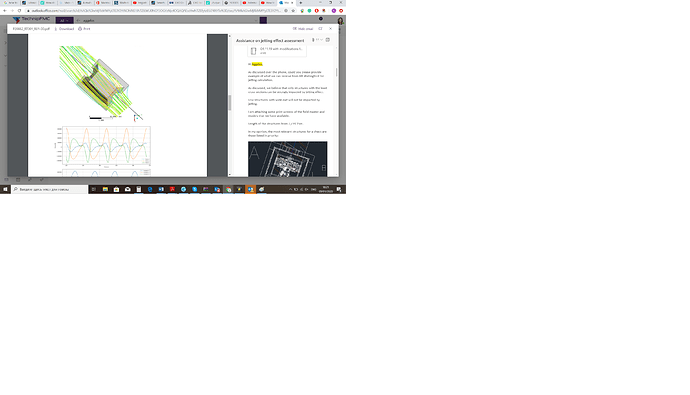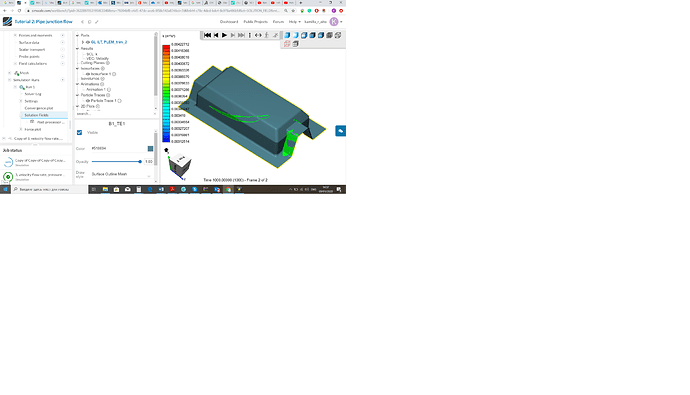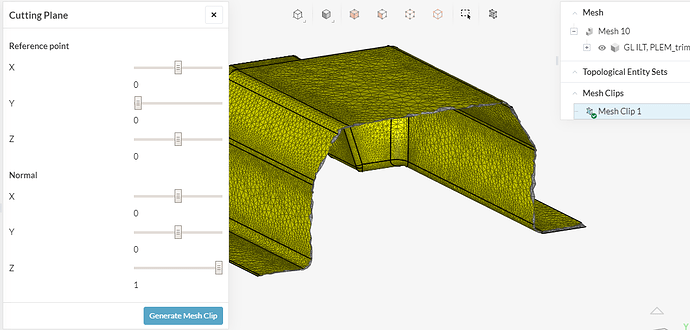Hi,
please help me to simulate outlet water flow on the cover (to check jetting effect).
1st question how to choose inlet or outlet surfaces? Should I model a box and put cover inside or I should choose surfaces of the cover (object) itself ( I am in doubts which ones to use to simulate it correctly).
-
What is the value of the pressure I should use for simulation . From my understanding in flow driving analysis inlet is flow rate, outlet is pressure. Pressure is calculated by formula p equal to p0-roAv. How to choose p0?
-
Please, see example of what I am trying to achive (1st picture)
-
How to postprocess results, I have not achieved anything so far good in simulation, see pic 2. Is there any simple check I can perform to make sure my model is up and running?
-
For some of the cases I use wall to simulated fixed BCs is it correct or can I simulate it with velocity inlet equal to 0.
-
I didnt get any reasonable results, any recommendations what I should look into (videos, etc.).
Please, see link below++
Thank you for help
Hey @kamilla_r_aito,
I’m not very familiar with this application, could you explain a little bit more how it works/add some extra pictures? It would help to understand a little bit better your needs.
With the current information:
- 1: From the first picture that you attached, it looks like external hydrodynamics. So yes, your geometry should essentially contain the flow region, where water will be, Alternatively, you can run an enclosure operation. Currently you’re meshing only the cover, so right now water is flowing inside it:
- 2: It depends on which type of analysis you’re running. For compressible you work with static or total pressure values. For incompressible, it doesn’t really matter what outlet pressure you choose, because what really matters is the pressure gradients. Normally pressure outlet is set to 0 Pa for simplicity.
- 4: You can find the most used post processing features here. Those lines that you see in the first picture are stream lines and you can create them using Particle Traces in the post processing environment.
- 5: if you want to apply a no slip condition at the walls, you can simply select a wall boundary condition and set velocity to “no-slip”. Although I might be misinterpreting your question

- 6: There’s quite a lot of material about external flow in SimScale’s youtube channel. You might also be able to find some similar projects in the public projects section.
If you need further clarifications, make sure to ask!
/Ric
3 Likes
Hi Ricardopg, thank you very much
Now my question is how to model the mesh for the outlet and for the analyzed equipment. I don’t have experience with poly mesh, what is the easiest way to mesh?
Thank you
Regards, kamilla
Try using the automatic meshing tools for the time being. It will do the work for you, although you can always add extra refinements in regions you want. You can find some automatic hex meshing tutorials here and here. Make sure to also check the documentation on hex dominant meshes.
3 Likes
Hello Ricardopg, would you be able to look at my model in simflow? I have installed it locally on my computer as from what I see, i do not hav enough functions to run analysis in simscale.
Maybe I am wrong and don’t understand something.
Thank you in advance,
Best regards,
Kamilla
I’m sorry but that’s going to be a no 
In any case, I suggest that you study a little bit more of the documentation/public projects and also try to explain your project more thoroughly (as I suggested in my first response).
Your project description and needs aren’t very clear to me so I can’t provide further insight. Maybe someone from @cfd_squad has done similar sims in the past.
/Ric
Ricardo, thanks a lot
I am progeressing now,
One questions that came up to my mind, does simscale takes into account self weight of the product in case of the fixed bottom surface BCs?
I can not see density of the component to be applied, i checked forums as well.
Thank you in advance
Best regards, Kamilla
You’re welcome @kamilla_r_aito, glad you’re working through it!
Now for your questions…
If it takes into account the solid part’s density and weight (the cover’s density and weight in your case)? It doesn’t make a difference for incompressible flows. A wall is a wall regardless of the material.
It makes sense to specify density of the solids in applications that involve heat + solids, such as conjugate heat transfer.
2 Likes




